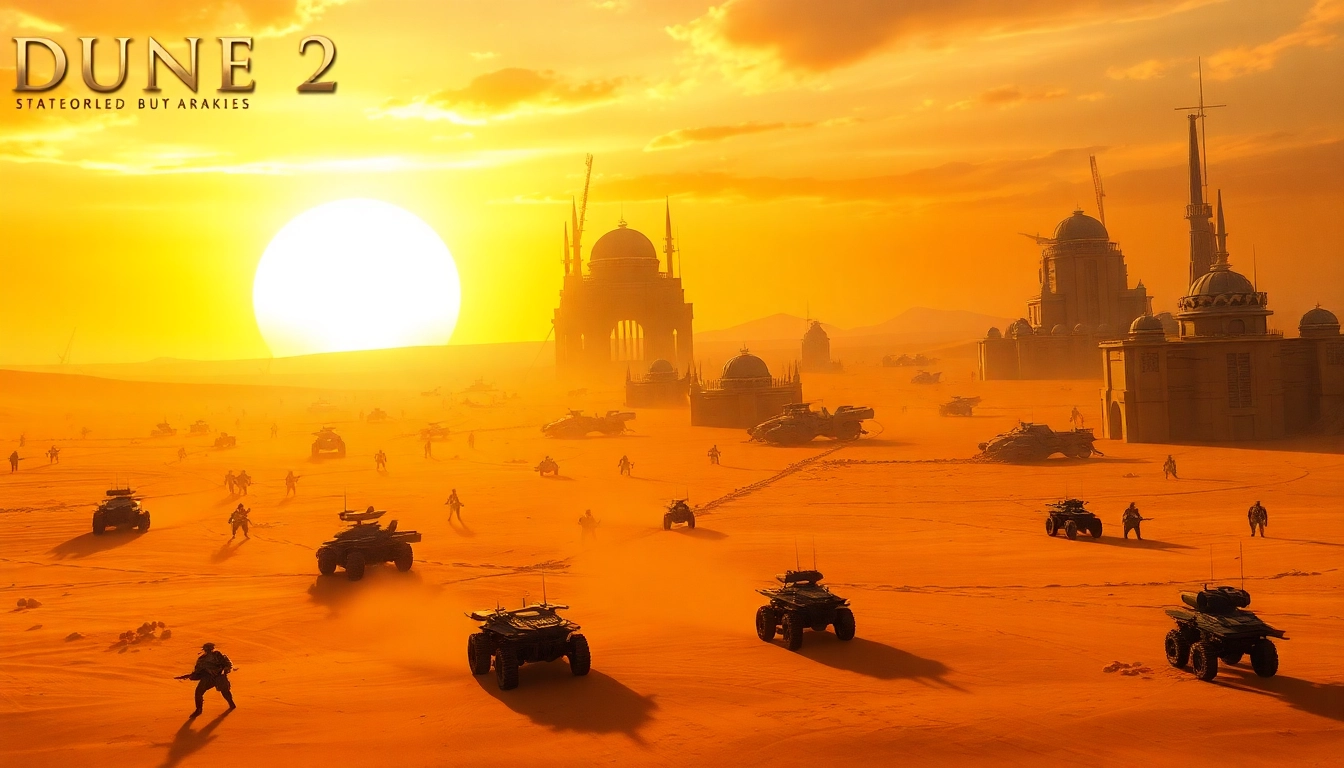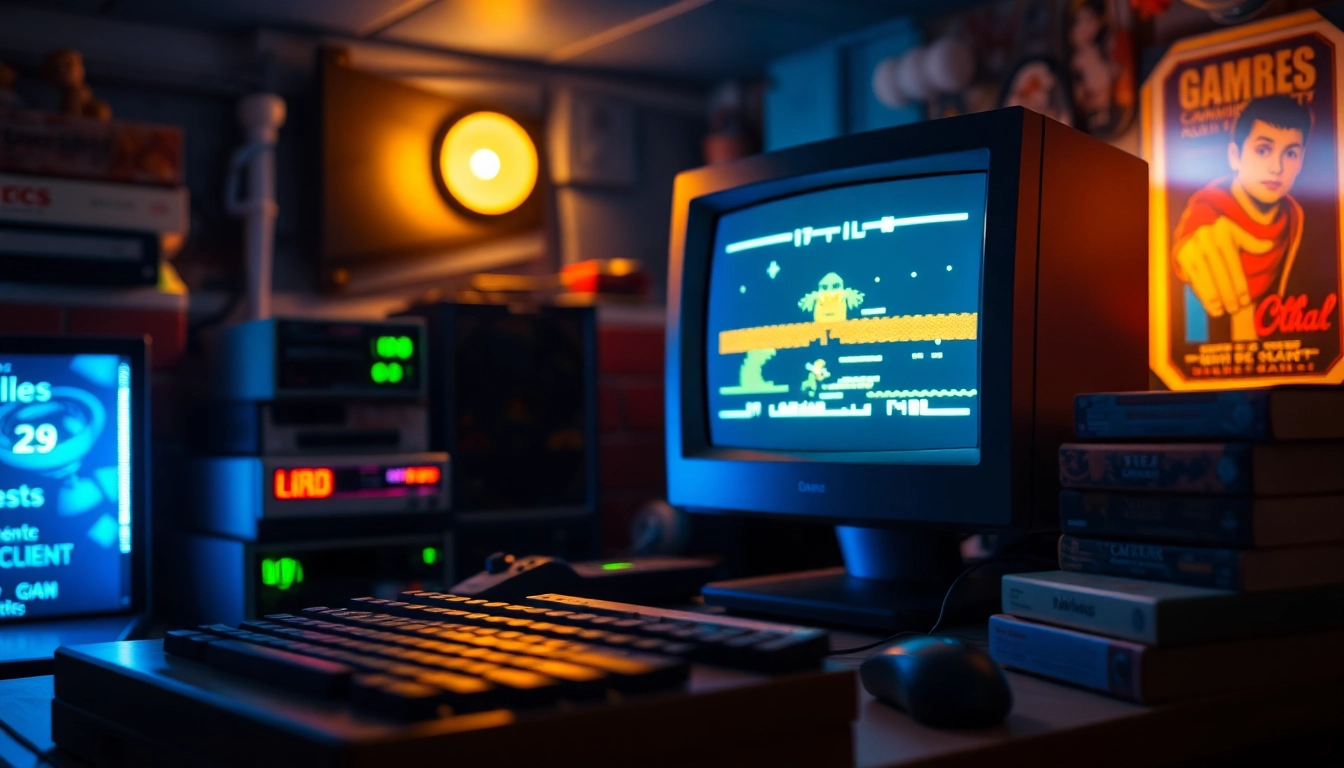Introduction to the Dune 2 Game
The dune 2 game represents a seminal moment in the history of video gaming, specifically within the real-time strategy genre. Released originally in 1992 by Westwood Studios, this game laid the groundwork for what strategy games would become in the future. Often regarded as one of the pioneering titles in the RTS category, Dune II: The Building of a Dynasty offers players a unique blend of resource management, tactical warfare, and immersive storytelling set against the backdrop of Frank Herbert’s Dune universe.
Overview of Game Development
Dune II was developed amidst a period of rapid technological advancement in the gaming industry. The developers at Westwood Studios sought to build upon the success of the original Dune game, which was a graphical adventure, by creating a real-time strategic experience. Utilizing a modified version of the game engine that facilitated a new perspective on gameplay dynamics, they introduced features that would later become staples of strategy games, including base building, resource management, and unit production.
Historical Context and Legacy
At the time of its release, the gaming industry was evolving, with computers becoming more capable of delivering complex interactive experiences. Dune II emerged during this period, capturing the essence of strategy through its innovative gameplay. It set new benchmarks not just within the Dune franchise but across the gaming landscape. Its influence can be traced in numerous successors and contemporaries within the genre, establishing conventions for future titles such as unit control, fog of war, and an emphasis on economy management.
Gameplay Dynamics and Mechanics
The core gameplay of Dune II revolves around the management of resources and strategy. Players select one of three factions—the Atreides, Harkonnen, or Ordos—each with unique traits and mechanics. The objective is to gather spice, the most coveted resource in the Dune universe, while simultaneously constructing and defending bases against rival houses. The game mechanics promote engagement, as tactical decisions can shift the balance of power quickly during play, and each choice can lead to various strategic outcomes.
Key Features of the Dune 2 Game
Unit Types and Their Roles
In Dune II, players have access to a diverse array of units, each categorized based on functionality. Understanding the interplay between unit types is crucial for crafting an effective strategy. For instance, combat units like Troopers and Vehicles serve offense, while defensive installations like the Gun Turret help protect resources. The balance between offense and defense, along with the optimal utilization of specialized units like the Saboteur or the Carryall, becomes essential for any aspiring commander.
Resource Management Strategies
Resources shape the experience in Dune II, and efficient management is key to success. Players must adeptly harvest spice, manage production facilities like Refineries, and sustain their economy to maintain unit production. Strategic resource allocation allows players to scale their military might or fortify defenses based on current situations. The balance between immediate needs and long-term strategy is a central pillar of gameplay, showcasing how resource management is not just about quantity but also timely decisions.
Map Design and Navigation
The game’s map includes diverse terrains featuring mountains, valleys, and sand dunes that influence movement and tactics. Navigating this complex landscape is essential to establishing advantageous positions for attack or defense. The layout encourages exploration and renders certain areas more valuable based on spice availability, making them critical hot spots during gameplay. Familiarity with the map design fosters stronger strategic planning, as players can exploit geographical advantages during conflicts.
Strategies for Dominating the Dune 2 Game
Effective Faction Selection
Each faction in Dune II presents different strengths and weaknesses, thus impacting overall strategy. The House Atreides offers superior infantry, making them formidable in ground battles, while the Harkonnen, with their strong vehicles, are potent in offense. Understanding each faction’s unique mechanics not only aids in maximizing capabilities but also in anticipating opponent strategies, paving the way for strategic exploitation.
Building and Defending Bases
A strong base is the backbone of any successful strategy in Dune II. Players must prioritize building defensive structures like Barracks and Repair Facilities to ensure sustainability against assaults from rival houses. The strategic placement of defenses, along with managing agricultural and military production buildings, creates a durable fortification that can withstand the test of time and enemy advances. Additionally, intelligent scouting can inform players where to bolster defenses for maximum efficiency.
Annihilation Tactics for Rivals
Executing well-timed offensives can lead to overwhelming an opponent, particularly through a combination of ground and air assaults. Flanking strategies, combined with heavy artillery, can dismantle enemy defenses quickly. Utilizing distractions or feints can create openings, allowing players to strike at the heart of rival operations. Understanding when to push forward aggressively and when to hold back for tactical advantage often hinges on the player’s decision-making prowess.
Community and Online Presence of the Dune 2 Game
Fan Modifications and Enhancements
A dedicated community has emerged around Dune II, leading to a variety of fan modifications and enhancements that continue to breathe new life into the classic. These modifications can range from graphical upgrades and gameplay tweaks to entirely new campaigns and units. Fans of the game contribute to its longevity by creating an engaging environment that intertwines nostalgia with new experiences, retaining player interest across generations.
Forums and Discussion Groups
The strength of the Dune II community is underscored by vibrant forums and discussion groups where players exchange strategies, share experiences, and provide support. These platforms serve as valuable resources for both new and seasoned players, fostering a culture of collaboration and friendly competition. Discussions can encompass everything from advanced strategies on specific maps to general tips on improving unit management and resource allocation.
Sharing Gameplay Experiences
Players often share their gameplay experiences through streaming platforms or videos, further enhancing the game’s reach and accessibility. Showcasing strategies, walkthroughs, and even competitive matches allows viewers to witness varied approaches to the game, blending entertainment with education. This sharing of strategies via visual media not only helps newcomers but also brings seasoned players together to critique tactics and improve gameplay further.
Future of Dune 2 Game
Modern Remakes and Adaptations
The future of Dune II has been brightened by remakes and adaptations that honor the spirit of the original while offering modern gameplay experiences. These remakes often update graphics, refine mechanics, and enhance user interfaces to cater to contemporary audiences. As technology continues to advance, these adaptations promise to keep the essence of the Dune universe alive while drawing in new players who appreciate polished, immersive experiences.
Impact on Strategy Game Genres
Dune II is often credited with defining many elements of the real-time strategy genre, influencing countless games that followed. Its emphasis on base-building, resource management, and tactical unit control have laid the groundwork for what would become industry standards. The game’s impact is visible in a wide array of strategy titles, as developers continue to draw inspiration from its mechanics and design.
Evolving Player Communities
As the Dune II community evolves, players are finding new ways to engage through competitive leagues and tournaments that celebrate the game’s tactical depth. The fostering of such communities serves not only to keep the game active but also helps cultivate a new generation of players who can learn from the successes and failures of seasoned veterans. Evolving communities ensure that the rich experience of Dune II continues to thrive well into the future, making it a perennial classic in the realm of strategy gaming.




